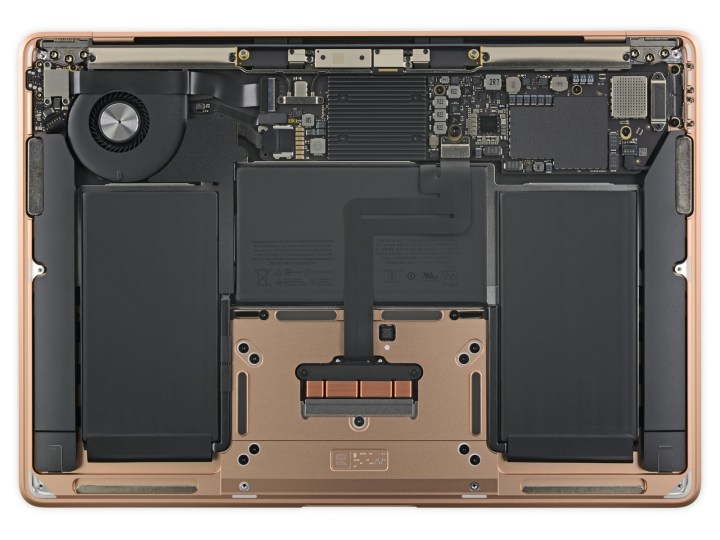
If you’ve purchased Apple’s new MacBook Air, you might be surprised to learn that you may be able to repair it on your own if something happens to go wrong. The repair site iFixit has given the MacBook Air a repairability score of 3 out of 10, an unusually high result for a Mac.
Compared to previous Apple laptops, iFixit finds that many of the key components on the new MacBook Air are modular and very straightforward to access. Though the RAM and storage are still not upgradable, screwing out and popping off the back cover on the new device is now an easy task. There are no cables or other items dangling between the cover and just two clips under the main body hold it in place.
As for the insides of the MacBook Air, six Torx screws and a few cable connectors hold the logic board to the undersides. The Thunderbolt ports and fans are also sitting on their own boards for easy removal and replacement in the event of failure.
“After a few twists of our pentalobe screwdriver, one good tug pops the lower case free of its two clips, and we’re in. This simple procedure brings a smile to our face in comparison to some of the booby-trapped lids we’ve found on MacBooks and MacBook Pros lately,” noted iFixit in the report.
Elsewhere in the new MacBook Air, the battery is not glued down to the inside of the chassis. Apple is instead using adhesive pull tabs for easy removal once both the logic board and speakers are pulled out of the way. This process requires some patience and slight expertise, but it means that you can follow steps online to remove the battery or replace it on your own once it goes fully dead.
“Though this update seems to favor experienced technicians more than the average DIYer, we’re hoping it’s the first step back toward repairable MacBooks,” notes iFixit.
Apple still makes keyboard replacement difficult, as it is integrated into the top case and will need a full removal for service — something that is beyond the scope of the average user’s expertise. Still, compared to Microsoft’s glued-together Surface Pro 6, Apple looks to be taking steps that might help consumers repair and replace components from their devices on their own.
Editors' Recommendations
- These 6 tweaks take MacBooks from great to nearly perfect
- If you buy one MacBook Air alternative, make it this one
- The case for buying the M2 MacBook Air over the M3 model
- Which color MacBook should you buy? Here’s how to pick
- Why you should buy a MacBook Air instead of a MacBook Pro


